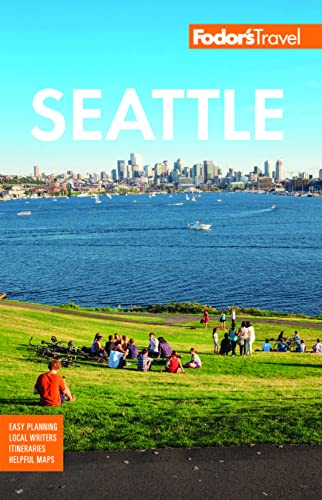Navigating Seattle
- Downtown and adjacent Belltown are the easiest neighborhoods to explore and are the parts of the city where you're least likely to need—or want—a car. Also, keep these tips in mind as you navigate the city:
- Water makes the best landmark. Both Elliott Bay and Lake Union are pretty hard to miss. When you are trying to get your bearings Downtown, Elliott Bay is a much more reliable landmark than the Space Needle.
- Remember that I–5 literally bisects the city (north–south), and there are limited places at which to cross it (this goes for pedestrians and drivers). From Downtown to Capitol Hill, cross using Pike, Pine, Madison, James, or Yesler; from Lake Union or Seattle Center to Capitol Hill, use Denny; above the Lake Washington Ship Canal (the "canal"), 45th, 50th, and 80th are the major streets running all the way east–west. East–west travel is usually more laborious than north–south trips, so plan accordingly, particularly during rush hour.
- The major north–south routes connecting the southern part of the city to the northern part are I–5, Aurora Avenue/Highway 99, 15th Avenue NW (Ballard Bridge), and Westlake (Fremont Bridge) and Eastlake Avenues. With the exception of some difficult on-ramps, I–5 is easy to navigate. Note that Aurora has a limited number of signed exits north of the canal (mostly you just turn directly onto side streets) and a limited number of exits in general Downtown (after the Denny exit if you're heading north to south). Some of the Downtown exits are on the left-hand side, making this road a bit more confusing if you don't know where you're going.
- Public buses provide a sufficient (if sometimes frustrating) system that's best used to move between Downtown and Capitol Hill, the University District, or Queen Anne. To get from Downtown to Seattle Center, use the monorail. To get from Downtown to Pioneer Square, walk down 1st Avenue or jump on a southbound bus on 1st Avenue. (Note that walking is often the fastest way to get around Downtown and Belltown.) Using the bus system to get from Downtown to the neighborhoods above the canal can sometimes be a slow process during nonpeak travel times, but trips directly to downtown Ballard, Fremont, and Phinney Ridge/Greenwood are fairly straightforward and efficient.
- Streets in the Seattle area generally travel east to west, whereas avenues travel north to south. Downtown roads are straightforward: avenues are numbered west to east (starting with 1st Avenue by Elliott Bay and ending with 39th Avenue by Lake Washington), streets are named, and a rough grid pattern can be discerned. Above the Lake Washington Ship Canal, east to west streets are mostly numbered, starting with North 34th Street in Fremont and going up into the 100s as you head into the northern suburbs. Here, the system for avenues makes much less sense; they're mostly named, but a few are numbered. West of I–5, 1st Avenue NW starts in Fremont, and numbers increase as you go west toward Shilshole Bay, ending with 36th Avenue NW. East of I–5, 1st Avenue NE starts in Wallingford, and the numbers increase as you go toward Lake Washington, ending at 50th Avenue NE.
- Directionals are often attached to street names. N (north) is for Queen Anne, Seattle Center, and Fremont, Wallingford, and Green Lake. NE (northeast) is for the University District, and NW (northwest) designates Ballard. S (south) marks Downtown streets around Pioneer Square and the International District. SW (southwest) means West Seattle. E (east) designates Capitol Hill and Madison Park, and W (west) means Queen Anne and Magnolia.




